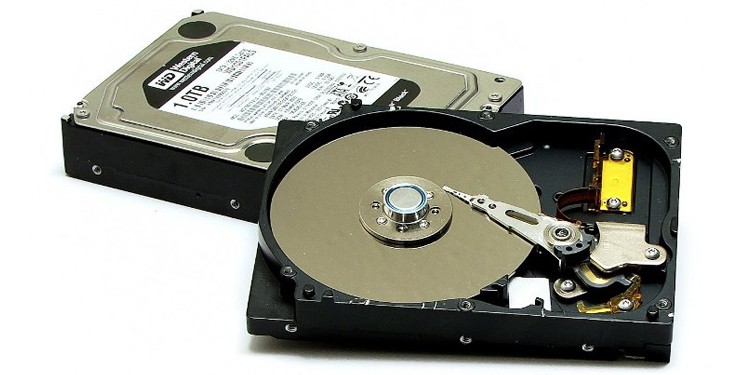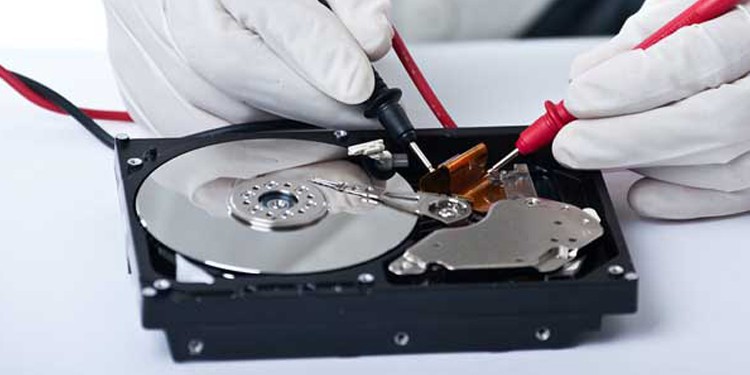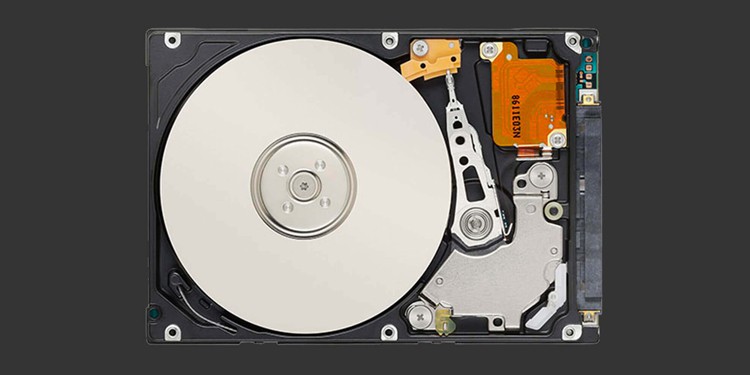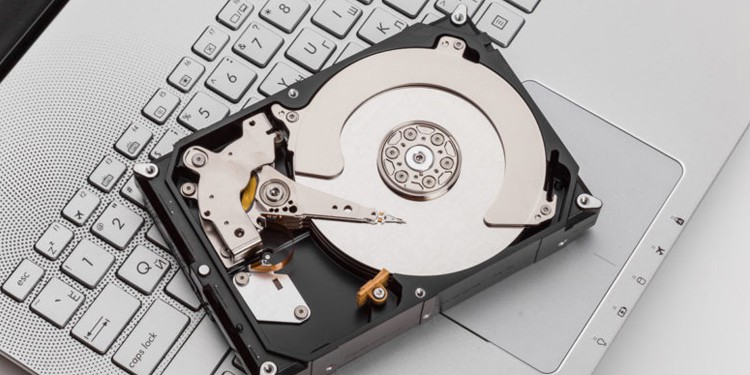Last Updated on
If you’re looking for internal storage for your computer, you’ve likely seen the acronym HDD. What is it, exactly? Well, it stands for ‘Hard Drive Disk’, and it is typically the largest type of hardware storage device you’ll find in a computer. It’s the type of hard drive that’s been around since the birth of computers. In fact, you can bet that the computer you’re using right now has an HDD, and if it doesn’t, you’ve certainly used a computer with an HDD in the past. In this article, we’ll tell you how a hard drive disk works, the benefits of using an HDD in your setup, and the different kinds of hard drives and storage capacities you should look for. Remember to keep in mind your specific needs with your computer, as well as your budget and disk space requirements. This can help you to narrow down your options and help you decide which HDD will work best for you.
Understanding What a Hard Drive Is

Understanding the basics of how an HDD works can give you a good idea of what you will be using it for. Essentially, a hard drive disk is a spinning wheel with a magnetic coating that stores your data. But it is different from RAM in that it is not volatile, and the data stored on it will not go away once the computer is turned off. With a hard drive, the data stored on it will be on there forever, until the user decides to manually delete it themselves.
There are a variety of content types that can be stored on a hard drive. Music, movies, images, games, Word documents, Photoshop files, PDF files, and much more: all of this is stored on your drive. Although developments in technology have changed the way hard drives are built, there are still a lot of similarities between current hard drives and the first hard drives developed for IBM computers. The first IBM computer with a hard drive had spinning-disks that were two feet in radius—and they stored less than 4MB of data. In part, this is why the first computers literally took up an entire room to store. Today, hard-drive disks are 3.5 inches in diameter (or less for laptop hard-drives) and they can hold up to 10 Terabytes of data—that’s 10,000 Gigabytes. Not only can hard drives store much more information and content at once, but the size of the hard drive has been drastically reduced, making them smaller yet more powerful. This is why modern-day computers are much smaller than room-sized, and can even be made compact so that they’re easy to store and travel with.
If you look at an HDD outside of a computer, it looks a lot like a tiny record player. It’s rectangular body holds a magnetic disk called a platter. This disk spins and by the use of a spindle (the part that looks like the arm of a record player). When it spins, binary code is sequentially written on the disk by a magnet. The magnetic coating stores the sequence of the code and then data is re-read when the disk spins. This disk spins very quickly, clocking in at the industry standard of either 5,400 or 7,200 rotations per minute (RPM). Each rotating platter sits on a track, which is divided into sectors. This makes up the entirety of the HDD.

Sometimes when your computer is working hard to run a program, it sounds like a wheel is spinning very quickly. This is your hard drive working at maximum speed. Much of your computer’s speed is determined by how fast your hard-drive is moving and how quickly it can access the data on your hard drive. You’ve probably noticed that your computer gets slower the more data you have stored on it: that’s why your operating system gives you pop up messages when your hard drive is almost full. This is why having a lot of space on your hard drive is essential for top performance. If you are a gamer and you are trying to run a high-capacity game, you may hear that disk-spinning sound as your hard drive works overtime to load the intense graphics and work in tandem with your video card. Have you ever opened up a giant Photoshop file? There’s a reason why it may take several minutes, especially if you don’t have tons of free space on your disk to begin with. Loading a huge file takes a lot of work and the disk is spinning as fast as it can to properly load up everything for you. Purchasing a bigger hard drive can help things load faster, especially if you have many more items that you want to store. Again, the platters are what store your information and load them up when you make a call to access them. A bigger hard drive has more platters; thus, the more platters, the more space available on your hard drive.
Space is one of the most important factors to consider when buying an HDD, but so is speed. As mentioned, the spindle is spinning the platters to access the data. This is powered by a voice coil actuator—essentially, a motor. The faster the spindle can spin the platters, the faster your data can be accessed. In the highest-end hard drives, the spindles are in a compartment filled with helium or another noble gas that’s lighter than oxygen. This allows the spindles to spin even faster and with less resistance. As you pay more money for an HDD, you’ll find the performance speed of the device increases. Having ample storage space and a high speed is the key to investing in a good hard drive that will allow your computer to function the way you need it to.
There are some downsides to HDDs. As they fill up with data, they get slower: this is because of fragmentation. HDDs work best when files are written in one continuous string of binary code. But when the drive gets full, it starts fragmenting data to different parts of the platters, and sometimes even to different disks. This increases the time it takes for your system to pull up a necessary file. This can can cause issues for gamers. The remedy to this is the Solid-State Drive (SSD). These drives use integrated circuits to store data—they don’t spin a disk, but instead write the binary directly to a network of electronic computer chips. SSDs have no mechanical parts (meaning, they don’t have any parts that move), so they are significantly faster than HDDs. However, they’re also much more expensive and they’re confined to smaller storage capacity. HDDs cost around 4-5 cents per GB, wherein SDDs cost 24-28 cents per GB.
When you’re buying an HDD, here’s what you’ll want to consider: space, speed and price. Often, the higher the price the higher the speed and space—however, good manufacturing can significantly impact the performance of a hard-drive disk. A well-manufactured hard drive will have components that function efficiently, with spindles that hold data over a long period of time. When your hard drive “crashes,” it means your spindles can no longer write and read data. This is why it’s so essential that you check out user reviews of the brand before you buy a hard drive (and look at the warranty too while you’re at it).
Types of Drives

There are also many different types of HDDs to consider. It depends on what kind of model you’re looking for and how you plan on using your hard drive. While this article mostly focuses on the classic, computer model hard drive, there are many other types of hard drive disks out there that many benefit you or the project you’re working on. Various kinds of hard drives include:
- Flash Drive – This is a very common and very small type of hard drive that’s perfect for when you are on the go. You can find them as solid state drives with USB connector ports. They are often small, about the size of a finger, which is why they have earned the nickname ‘thumb drive’.
- External Hard Drive – This is an HDD that looks and works very similar to an internal HD, but it is an external device that you can plug into your computer through a USB or connector port. It’s a hard drive with its own shell around it, so it can safely be placed outside of the computer and be plugged in to your PC whenever you need. It’s a great way for taking your important files with you so that you can install them across multiple computers.
- External Enclosure – While this isn’t a type of hard drive, it is a type of option that you can invest in for your HDD. It’s a custom housing that you build for your internal hard drive, which allows you to essentially convert it to an external drive. Whether you have a USB or FireWire connection, you can use them to transfer contents between your main PC and another.
The different types of hard drives all come with their own set of storage capacity and speed requirements. The kind you buy depends on what your specific needs are, as well as your budget and your free space.
There are also different tasks you can perform with your HDD as well. While a hard drive’s main purpose is to permanently store, save, and give you access to any and all of your data, there are several different things you can do with it. One of the simplest tasks an HDD can perform is to change the letter of the drive. For example, you would normally access files stored on the hard drive through the path that starts with “C”. If you have an external hard drive, you can change the name of this letter to be “M”, “X”, or whatever letter works easiest for you.

Another easy task you may need to perform is to partition the hard drive into sections. For example, you can install your computer’s Operating System on one section, saving the other half of the partition for something else. If you have a MacBook, and you want to be able to switch between using Mac and Windows, you can partition the hard drive so that half of the storage capacity is dedicated to your Apple OS, while the other half is for Windows 10. Whenever you restart your MacBook, you should be able to choose which part of the partition you wish to access, which will then lead you to the OS you desire.
Over time, your hard disk can become fragmented. This means that parts of your files have become mismatched and are not placed in the correct order. This can cause your hard drive to experience lag, and it may need to be defragmented in order to start running efficiently again. Defragmenting your hard drive is a simple and easy task that you can perform at any time. Your OS should be able to give you a way to access the defragmentation action. This typically takes several minutes to complete, but you can track its progress to be sure that your files are being arranged in the correct order.
There are many ways you can troubleshoot your HDD if you are having problems with it. If your HDD does not perform as normal, there many be a variety of issues to look into. If the hard drive is making a noise – not just the disk spinning noise – you may need to run a hard drive test. If you’re on Windows, you can type in chkdsk to identify and perhaps correct any issues with your hard drive. There are free programs you can access as well to help you fix the problem.
HDDs are the classic model of hard drives, but the technology has upgraded immensely over time. They hold the most data for the cheapest price. If you’re buying an HDD for your computer, you’ll get great value to performance.

